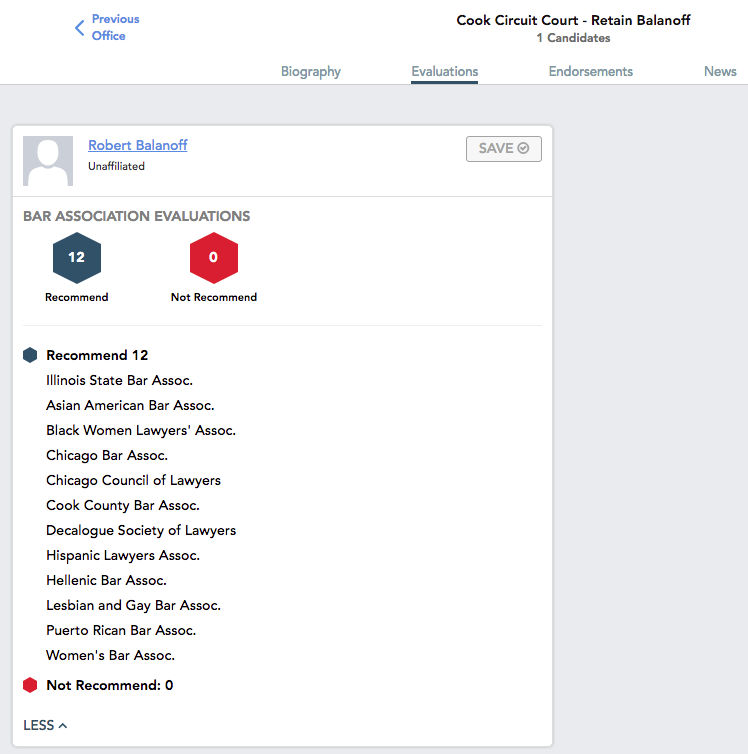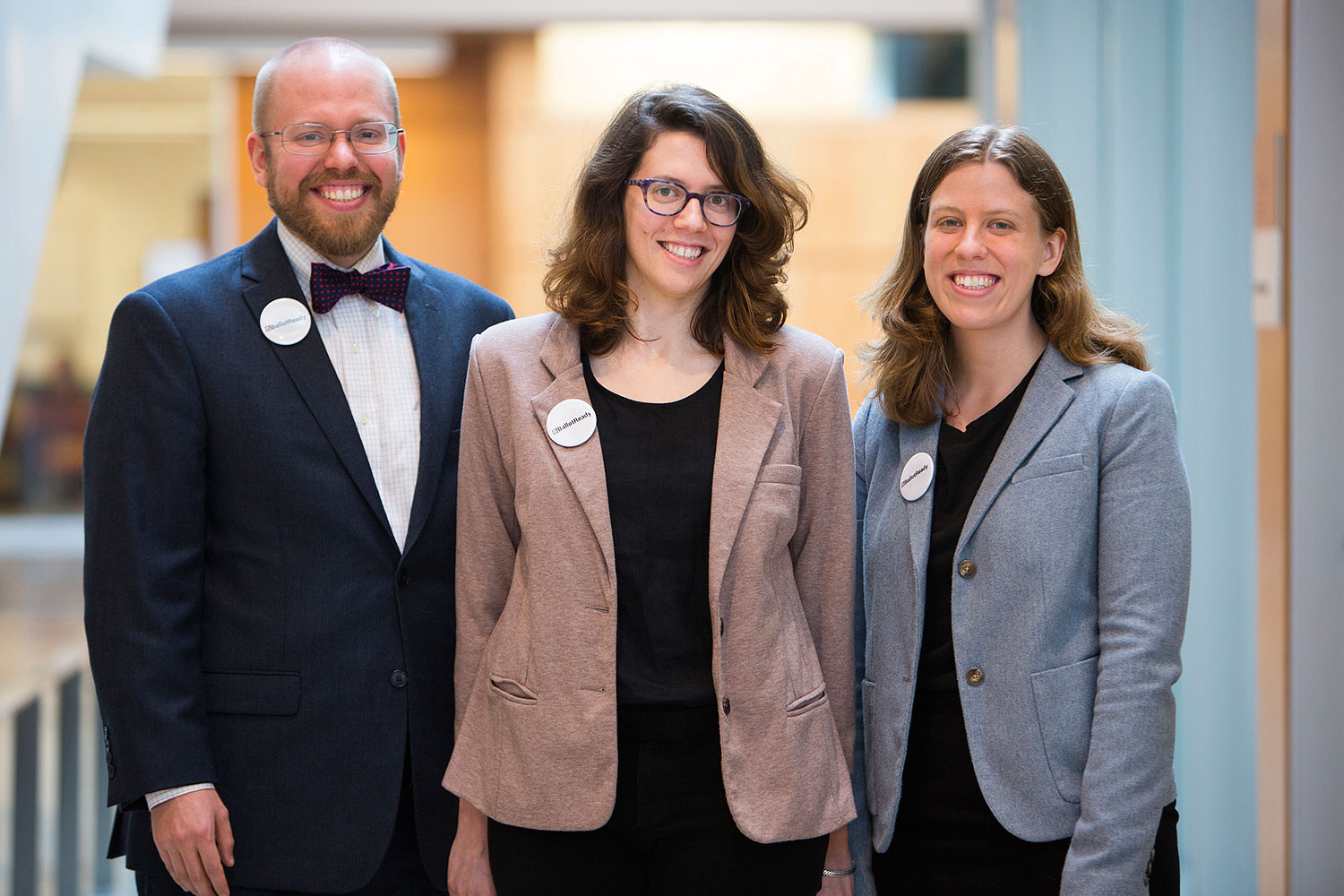In 2012, Alex Niemczewski was a recent University of Chicago graduate with a background in nonprofit community work—young, well-educated, civic-minded. As you might expect, she went to cast a ballot. What happened next probably won't surprise you (especially if you live in Chicago).
"I was very ready, and psyched to vote for president, but when I got to the voting booth, I saw all these offices that I didn't really know what they were responsible for, and all these names on the ballot I'd never heard before," Niemczewski says. "I left feeling pretty guilty. I didn't want that to happen again."
Niemczewski is now the CEO of BallotReady, a site that allows users to enter their address, get their ballot, read aggregated information about candidates and ballot measures, and save their choices to take with them in the voting booth. (My ballot, in the city of Chicago, has 86 different choices to make this year, including 69 judicial candidates, which are really, really important but historically difficult if not impossible to get voters to care about in any systematic way.)
"I made the first version of the site myself in summer 2014, because I was preparing myself for the midterm elections, and I was thinking about my experience in 2012," Niemczewski says. "The first version of the site was very ugly, simple, just for me. And the first person I called was my now co-founder, Aviva Rosman, because a couple months before that, she had called me, and was like, hey, I'm running for local office, will you vote for me? I was like a) yes, but b) I didn't know there was an election happening.
"I called her because I knew she would understand, from a voter's perspective, but also from a candidate's perspective, and she had been a CPS teacher for a number of years. I thought she would have a good sense of, how do we—there's so much information about candidates and offices, how do we present this in a digestible way. We would go swimming together, and we started only using kickboards because we only kept talking about it."
In December of 2014, they became a partner with the University of Chicago's Institute of Politics, and got their first funding ($400) which they used for voter-behavior research, interviewing 150 people about how they approach voting. "Specifically what we did was create paper voter guides, and we asked people to highlight, in green, what they liked about candidates, and in red, what they really didn't like," Niemczewski says. "We learned a lot from that. We created the first design of the site, in hindsight still ugly."
They followed with a pilot site for the Chicago mayoral election; funding from the Institute of Politics, the Booth Social New Venture Challenge, the Knight Foundation, and the National Science Foundation allowed them to cover Kentucky's gubernatorial election in the fall of 2015, chosen because it was a swing state (as far as governors go) with lots of downballot races to test the greater purpose of the site. A year later, they're covering nine states—Illinois, Arizona, California, Colorado, Hawaii, Massachusetts, New York, Ohio, and Pennsylvania—with Virginia going live next week. 60,000 people have used it for Illinois ballots in the past two weeks.
To do that means facing the problem Niemczewski had in 2012 in cities and counties across the country, gathering not just all the candidates and their jurisdictions but biographical information, issue stances, and endorsements. Take the first judicial-candidate decision on my ballot, just one of 69.

So that's one of 69 candidates with 12 different sources for evaluations, or 828 data points, for just the judicial races in Cook County. To track this information, BallotReady uses two approaches.
"We figure out from the boards of elections or secretary of state who's actually on the ballot and running for what offices in which districts. Then very structured crowd-sourcing is the first step," Niemczewski says. "We often use a service called Mechanical Turk"—an Amazon platform that allows people to contract out small, discrete online tasks for small payments—"we have very specific online research tasks, and we have multiple people do them, and when they all match it makes it to the next step, which is that it gets copy edited by people on our staff. This way we can do research for thousands of candidates."
And they've begun using machine learning as a taxonomic tool.
"We also use IBM Watson," Niemczewski says. "Basically it's a tool that tags, if a candidate has a stance on an issue, we tag it with the issue or issues it might belong to. For example, if the stance is 'I support funding teacher training for high school teachers,' that might be tagged as 'education' and 'budget.' And that way we can compare all the candidates' stances in a given race under the same issue."
After November 8, BallotReady has two more issues to start to solve: how to pay for it, and what to do between elections. "Right now we are pre-revenue; we're not exactly sure what we're going to do with our model, Niemczewski says. "In terms of activism and actions people can take in between elections, that's kind of our next step to figure out what's useful. We have many half-baked ideas, but we want to do some interviews first."



